Larry Ossei-Mensah, a catalyst for diversity and access, talks about his pursuit of equity in the art world, via his non-profit ArtNoir.
My curatorial philosophy revolves around a couple of pillars. One of them is access. I want to make sure everything I create is accessible to a multitude of audiences and not just an art audience. Creating a sense of belonging, that goes back to the idea of hospitality and people feeling welcome, because it’s one thing to attempt to bring in all these audiences but there is also another thing to make the space a welcoming space where people want to engage and learn and be enlightened.
Larry Ossei-Mensah
Featured image: Larry Ossei-Mensah. Picture credit Shannon Williams.
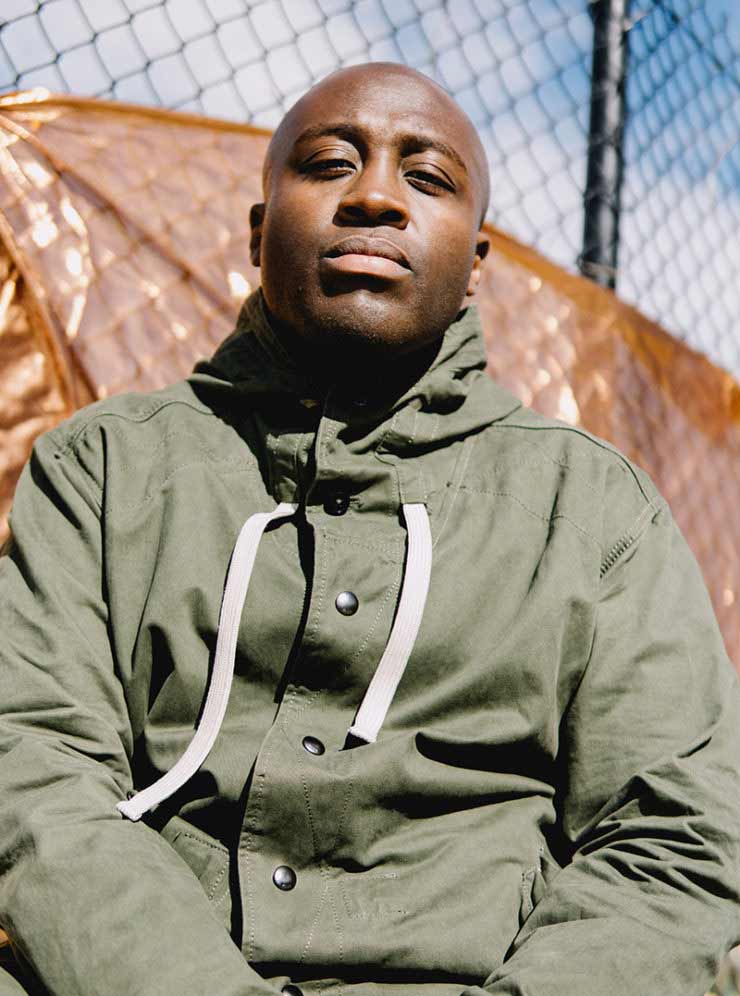
Larry Ossei-Mensah. Picture credit Aaron Ramey.
How do you describe yourself in the context of challenging people’s perspectives via your work?
The bread and butter of my practice has always been about celebrating the voices that have been historically pushed to the periphery. Pushed to the margins. Voices that have not historically been centred and that has a lot of perspectives, and a lot of angles. So when I think about folks from the African diaspora, when I think about working class people, blue collar people, poor folks, LGBTQ folks – I am really trying to think about it from their point of view but also by being very expansive. So, I am really thinking about power. Who has power, how do you create platforms, spaces, invitations for folks to assert their agency in a way that is meaningful? In a way that is generative. In a way that is frankly honest and transparent.
So, for me that’s always the exciting opportunity: to work with people who hopefully have fresh ideas, and can organise that in a way that can be educational, inspirational and enlightening for individuals.
Let’s start at the beginning. Tell us what led to this journey with art?
I started out as a photographer. As I said before, I am self-taught. I did exhibitions, realising that being a photographer was not my journey. I started writing about art. And through writing about art I realised that there weren’t enough platforms for artists of colour to be exhibited. And this is back in 2008, so this is before artists from the African diaspora were in vogue within the mainstream. I have continued to do that work. That evolved to not just thinking about the diaspora, but also about other voices that are on the periphery. How do you celebrate their artistic contribution and ideas in a way that is meaningful, intentional and contextually relevant to what is happening in our world?
How do you deal with the conceptual difficulty and uncertainty of creating something completely new with each project?
That’s just part of the process. I think as a curator we work through ideas and concepts, and give it a contextual framework that makes sense.The conceptual difficulty is part of the deal. If it was easy for folks to put together exhibitions everybody would be curating, but it wouldn’t necessarily mean that it’s good.
Part of organising exhibitions is going through the challenges and difficulties, refining ideas, sharpening concepts, dealing with logistical issues that sometimes arise. Personally, I understand well that it is a part of the process and as you do more shows you just put things in place to mitigate potential challenges.
How does a multi-hyphenate like you balance the contradicting elements of your work?
I don’t look at myself as a multi-hyphenate. I look at myself as a curator and I am interested in stimulating dialogue. Five to ten years ago you would have been just restricted to doing exhibitions in a white cube, but I think today we are in a climate where for me it’s more about organising space, creating hospitality, creating space for enriching dialogue. For me that could be through these Zoom conversations I am having.
It could be an exhibition. It could be a book. Or it could be a recipe. For a curator, particularly one that works in the capacity that I do, one has to be fluid and responsive. You shouldn’t be boxed in. I think that you should be led by what you feel stimulated by, what you are curious about. So I don’t see any contradictions. They are all trying to get to the same goal.

Larry Ossei-Mensah. Picture credit Aaron Ramey.
Let’s talk about your long-term vision. Would it be safe to say that ArtNoir is a step towards manifesting this vision?
ArtNoir has been in existence for over seven years. So, we have been in it. Not necessarily a step towards that vision, but I think we have been immersed in it.
It does align a lot with my desire to celebrate creatives of colour. Black and brown creatives, from the African diaspora, Latinx, Asia, and the Middle East. We are a non-profit and a lot of the work we do is to celebrate creatives that we think are making an impact.
We connect with individuals who are creatively curious, potentially patrons of the arts, and really just reframe how these dialogues and relationships are established and cultivated.
Looking at the current climate, a lot of the conversations we have been having have been about micro grants. We have been looking at potentially organising a micro grant that will specifically get resources in the hands of black and brown artists who might be struggling, whose show might have been cancelled or someone who has been laid off. We are aiming to reduce the red tape and really just get the resources in the hands of people who really need it.
Larry Ossei-Mensa on his curatorial philosophy.
My curatorial philosophy revolves around a couple of pillars. One of them is access. I want to make sure everything I create is accessible to a multitude of audiences and not just an art audience. Creating a sense of belonging, that goes back to the idea of hospitality and people feeling welcome, because it’s one thing to attempt to bring in all these audiences but there is also another thing to make the space a welcoming space where people want to engage and learn and be enlightened. Being a catalyst for diversity, I think about this in a very psychographic, socio-economic, cultural way. How we go deeper to explore those layers that make us who we are as human beings, as communities, as citizens of the world.
How does it all come together?
And then collaboration: it is a huge component of my practice, whether it is collaborating with an artist, or a curator or an institution or my ArtNoir co-founders. I am not able to achieve this work unless I am able to collaborate with some incredible people who have a shared vision but also bring their own talents and skills to the table. So for me that’s the rubric that guides a lot of my decision-making and dictates whether I will take on a critical writing project. Critical writing is a part of exhibition-making and is part of being a curator. I don’t think there is a philosophical approach to that. I think it’s the grounding and impetus of why I am even exploring an idea, doing an exhibition, or doing a project or a talk.
Right now for example at ArtNoir we are doing these Instagram live studio visits, now when everybody is quarantined. What does it mean for an artist to be quarantined? And how do you create an opportunity for people to engage with that artist on a deeper level, learn about their practice and see what they’ve been doing? For me it’s really more so about the rubric that I said before, and that cascades into what those articulations are because I feel like right now, curators have to be dynamic so all these things like critical writing, exhibition design, aesthetics and cultural theory, event management and organisation, fundraising and strategy are parts of what you do as a curator if you want to be successful.
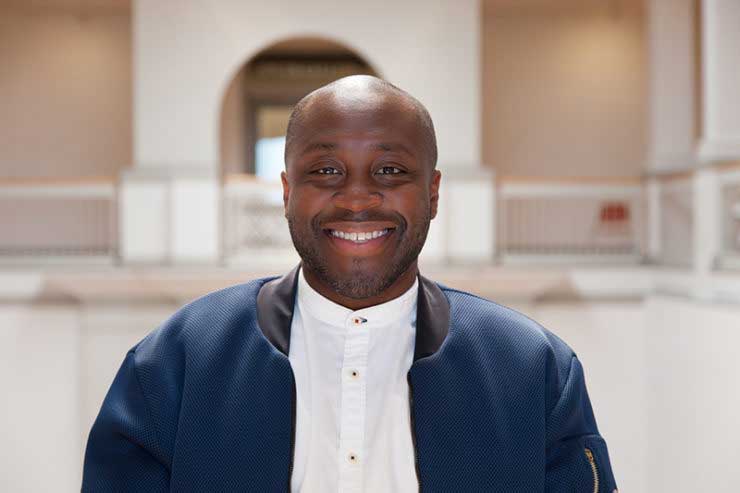
Larry Ossei-Mensah. Picture credit Shannon Williams.
Larry Ossei-Mensah on his frameworks, references and process.
As mentioned my pillars are belonging, access, catalyst for diversity and collaboration. Those are all the bread-and-butter pillars that align.
What inspires you?
My inspiration is to help people articulate their vision and ideas. I’m inspired most by just seeing people being enlightened, particularly those who are creatively curious but might not feel like the visual arts is something that they can access. I want to create a scenario where they can be part of the experience and be enlivened by it.
How does your interaction with an artist evolve from the initial interface?
It’s a case-by-case basis. A lot of it is dependent on what’s going on in my life at the time and what’s going on in the world at the time.
So, currently we look at the fact that we are socially distancing and that is going to trigger certain kind of ideas in an artist you want to work with. But at the end of the day I think it’s just about making sure that you are aligned and there is a mutual respect and there is a dialogue that stimulates you and the artist, or you and a group of artists, but it’s pretty much case-based.
I would like to always encourage an artist to do research to understand the type of shows that curators put together.
Larry Ossei-Mensah on the artist-curator relationship
Most curators tend to have a preference in terms of the type of art they want to show, whether that is painting, sculpture, video, work by women, fabric work etc. Really going into that next stage and understanding what is the exact type of show that the curator organises allows you to be more targeted. Because if you do fiber work you are not really going to engage on a deeper level with someone that favours curating video work because that’s just not their wheelhouse. And this work is not relevant to their experience. I have always aimed to keep my practice malleable. So, it is not really specific to a particular medium but it is really just responding to the questions of the day: what’s happening in society; or a dialogue that might be triggered by engaging with an artist.
I like to keep the engagement organic. There are some artists I have known for many years and I have done many visits, but I have not had an opportunity to show their work in an exhibition. That doesn’t mean we have not collaborated through talks or writing or other kinds of projects. So, I am expansive in terms of collaboration, interaction and working together. As long as it is organic and there is mutual respect, the sky is the limit.
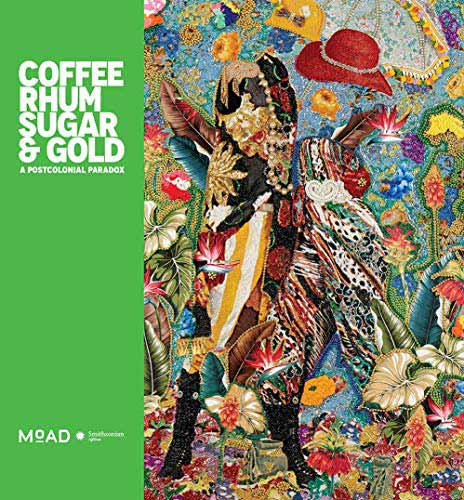
Coffee, Rhum, Sugar & Gold. Larry Ossei-Mensa.
Larry Ossei-Mensah on shows, performances and experiences that shaped his own creative process.
In terms of shows which have had an impact on me, a show that I did in 2019 with my colleague Dexter Wimberly called Coffee, Rhum, Sugar & Gold. It took two and a half years to organise. We produced my first exhibition catalogue. It was with 10 artists. It was a really dynamic show looking at the ripple effect of these commodities in the Caribbean.
And I’m gonna mention another show that I have had the opportunity to co-curate featuring Allison Janae Hamilton at MASS MoCA. My co-curator was Susan Cross and that was an exhibition that was up for a year. It’s very different to have an exhibition that is up for six weeks or six months versus a year. So, you have to think about every angle of it and make sure the show feels fresh, through programming that allows other access points to the experience. I would say those two exhibitions were important milestones.
Tell us about your own personal evolution, vis-a-vis the work that you do. What have you observed in the changing cultural landscape?
I am always seeking to challenge myself, learn and grow. I do not want to be static in my approach, knowing that there is always a more interesting way to work. It really just comes down to being observant and looking at what are the conversations that are being had, what are the tools that are being used, and what are tools are being under-utilised within the right context, could actually be a robust vehicle for a dynamic conversation. I’m seeking to constantly improve and remain a student. The thing that I always like to impart on people is that I am self-taught as a curator, so everything I learned is through doing, experience and mentorship that I have had, and through reading. It’s not your typical path. So I’m always searching for ideas and inspirations. It helps me grow and get to the next level.
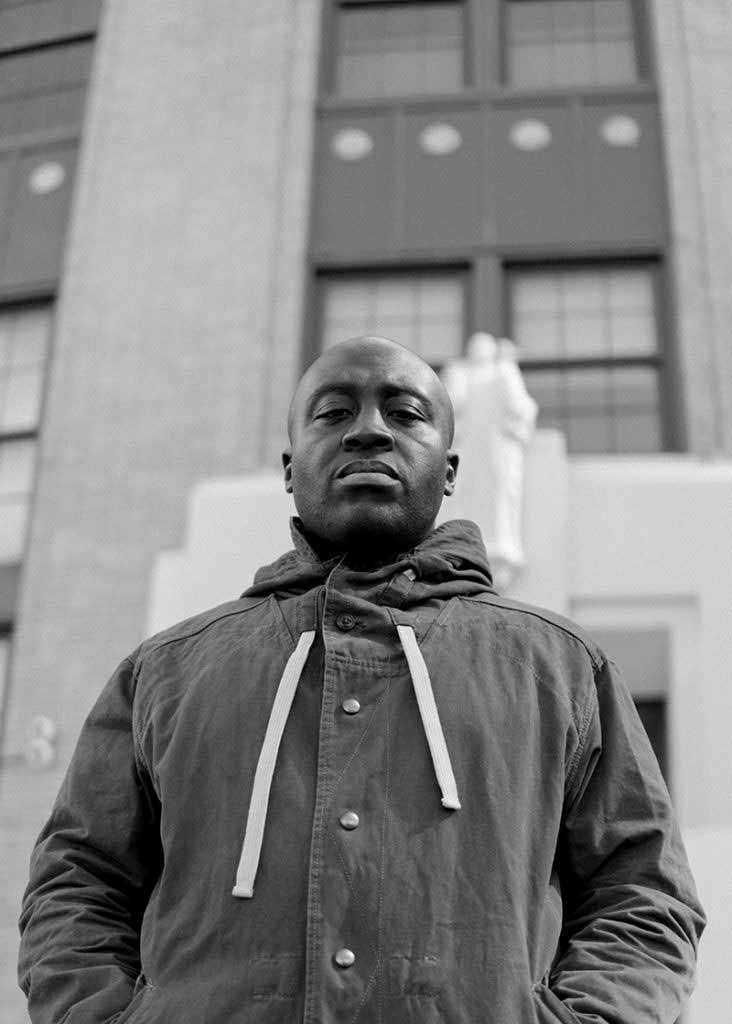
Larry Ossei-Mensah. Picture credit Aaron Ramey.
What are you working on now? What should we look forward to?
I am working on the seventh Athens Biennale, which is entitled Eclipse. I am the co-curator with Omsk Social Club.
Alongside, I am working on a number of exhibitions in the fall but I think the biennale is the focal point right now. Though it is interspersed with some other projects I’m doing right now through ArtNoir like Instagram live.
Then I’ve been co-organized with Troy Carter this weekly conversation series entitled The Parlour via Zoom in response to being quarantined. I’m getting different friends and colleagues in the art world to talk about how they are navigating this moment and imagining a future for the art world, and how can we do that together.
Let’s get imaginative. What is there a crying need for? What kind of a service or product would elevate the art industry?
It depends on where you live. I think in the US there is still a need for more resources to be allocated directly to artists and to the arts. Unfortunately, there still isn’t enough money that makes this equitable in terms of being able to earn a sustainable living depending on what part of the art ecosystem you operate in, and I think that there just needs to be more empathy. I think the current situation is about helping people realise this. It’s a time for generosity; sharing of knowledge, information and resources. So, I don’t think it’s only tangible things. I think there are also a lot of intangibles. Money is probably the one tangible thing, but for a lot of us we need more intangible things to expand the pie and have more people participate in this ecosystem that nourishes our world and our society.
I think in terms of events and symposiums, things of that nature, those are physical things that are not exactly rocket science to put together, but it’s more so with the intent of why you are creating it. I don’t think we necessarily need more of physical things. We need more people to be intentional about what they’re doing, and what they are creating, what they want to see in the world, how they’re supporting artists, how they’re supporting curators, critics and museums. If you shift the intention we would be able to look at what’s available and that could be something for people to learn and enjoy.
ARTNOIR is a global collective of culturalists who offer an alternative perspective to the traditional arts narrative, support the freedom of artistic expression for all, and provide a platform for bold acts of creativity and storytelling.
Follow Larry Ossei-Mensa.
Before you go – you might like to browse the Asian Curator curatorial archives . Contemporary art curators and international gallerists define their curatorial policies and share stories and insights about the inner runnings of the contemporary art world.








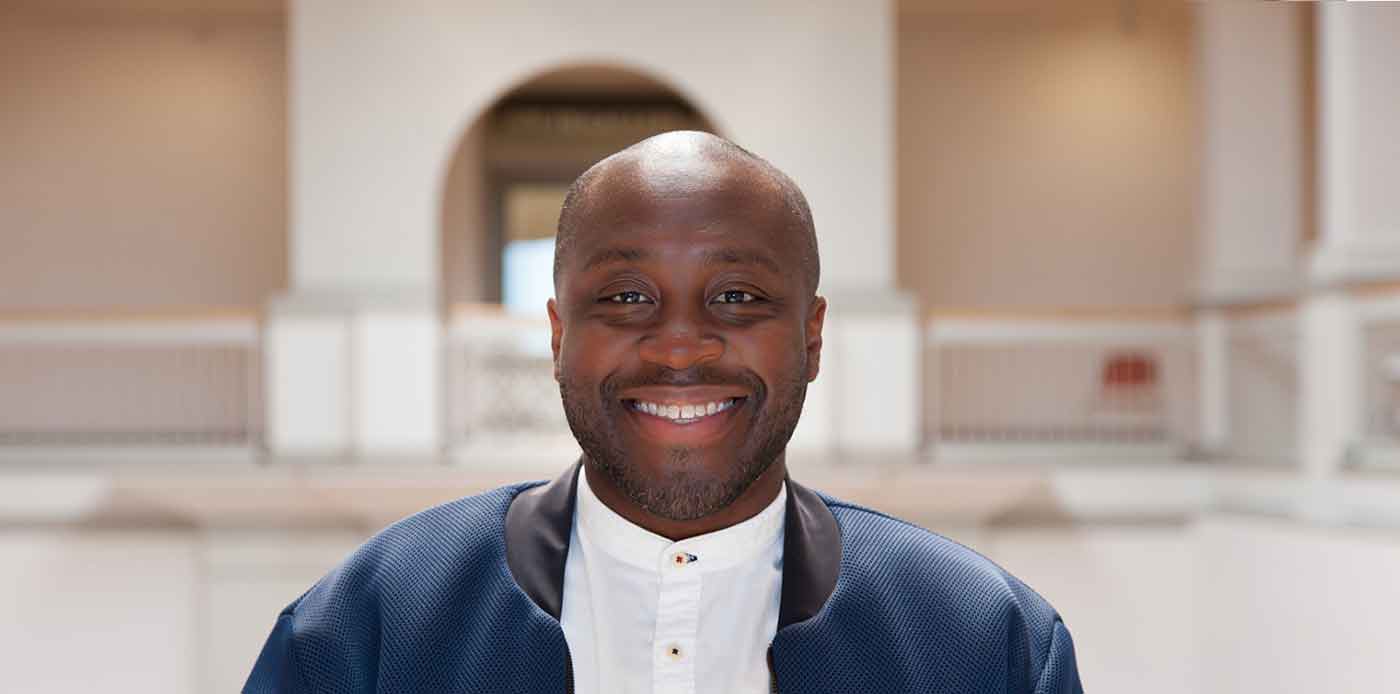


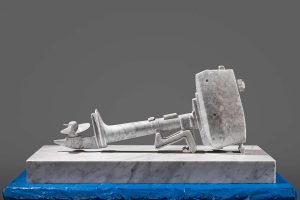
Add Comment